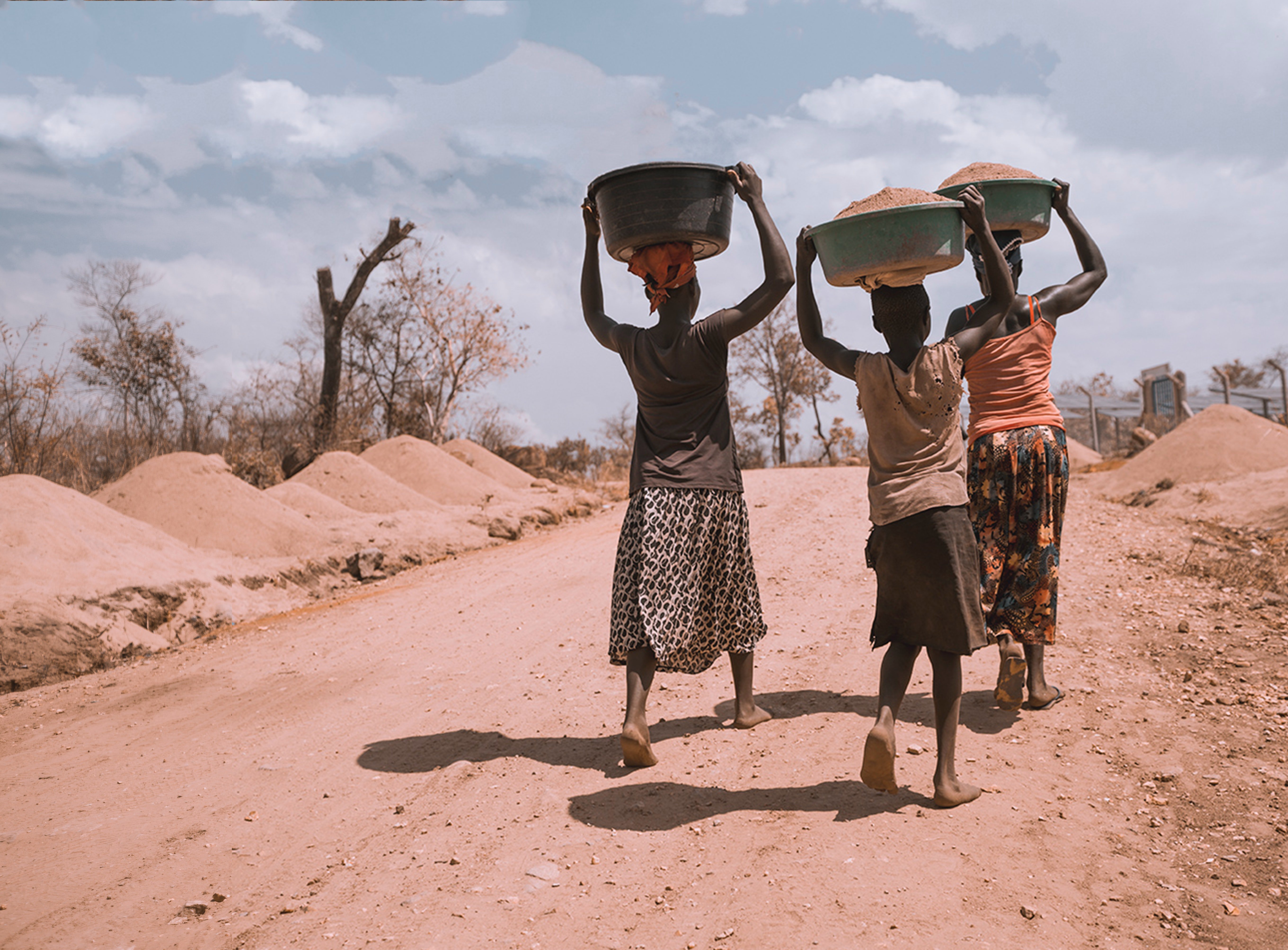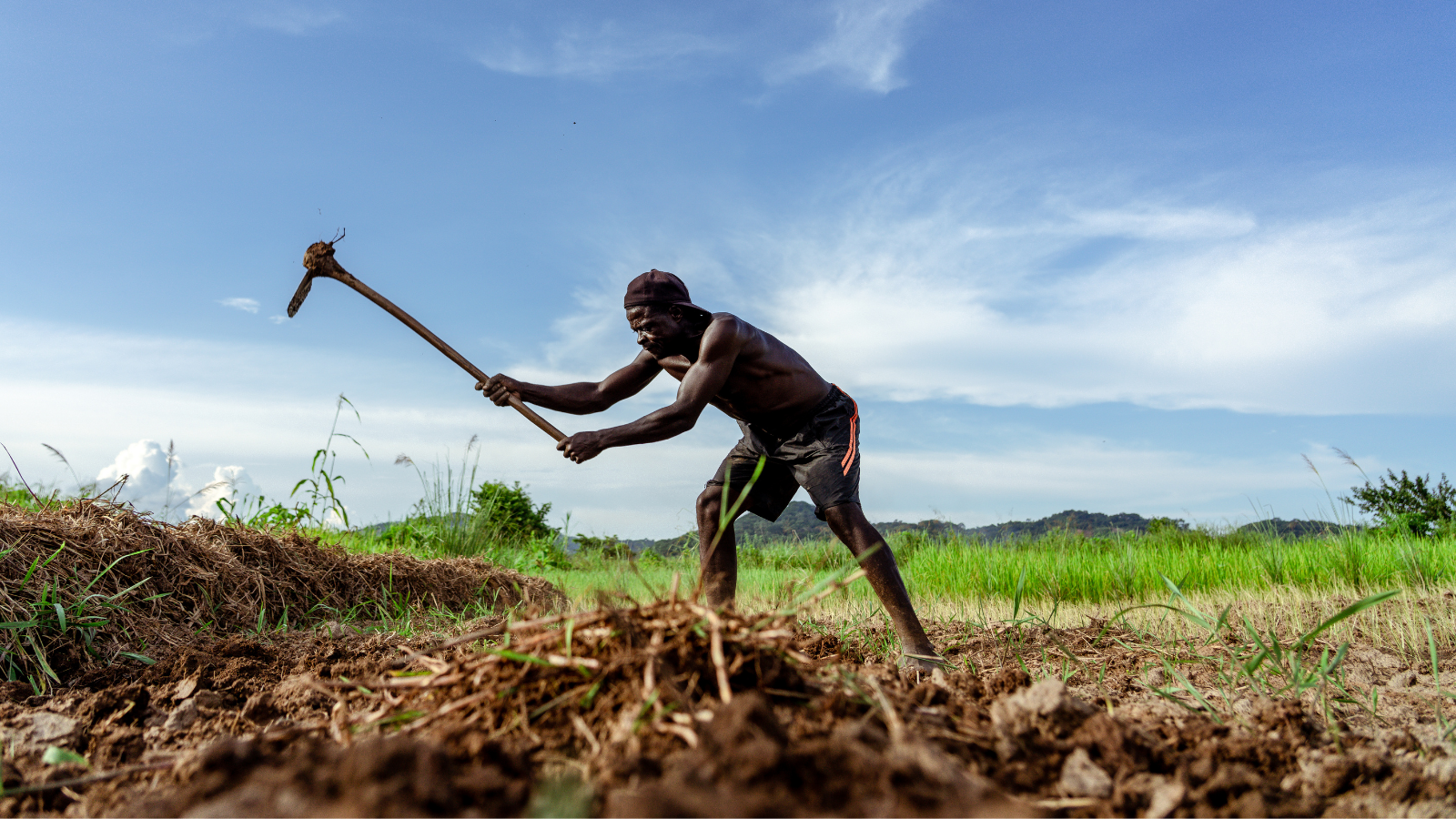Globally, there are over 500 million smallholder farms, working on which are over a billion people who cultivate fruits and vegetables and raise animals to create the food that ends up providing half of the world’s calories.
By preventing hunger and generating economic activity, these farmers create the conditions for communities to thrive. But farming is an arduous profession made even more challenging by the worsening effects of climate change.
Each year, farmers, especially those in developing countries, struggle to maximize their harvests and turn profits. Multiple bad years in a row can impoverish a farmer, forcing them to sell their possessions, even their land, a tragedy that can reverberate outward by depriving communities of a key source of food.
The harsh possibilities of agriculture have deterred millions of young people from entering the field. At a time when countries need to generate more food (because of the growing population) on less fertile land (because of climate change and unsustainable farming practices), the food system can’t afford to lose entrepreneurs, innovators, and laborers alike.
Countries also can’t afford to maintain the status quo of poverty and food insecurity that prevents farmers from doing more than barely scraping by year after year, praying that a strong hurricane or stubborn drought doesn’t ruin their livelihood.
The society-wide costs are simply too great to ignore.
Governments should instead transform the global food system by investing in smallholder farmers. Doing so would help countries defeat hunger and poverty, while defending the planet against climate change, according to the Ban Ki-moon Centre for Global Citizens, Global Citizen’s partner in the campaign to champion smallholder farmers, climate action, and food security.
In fact, financing for farmers pays for itself — every $1 invested in agricultural research by demand-driven research institutions such as the CGIAR generates $6 or more in benefits, such as increased farmer income and better health and educational outcomes for community members.
But there’s currently an annual financing gap of hundreds of billions of dollars — made worse by the COVID-19 pandemic — for everything from technical assistance to market development to resilience in the face of climate change.
The lack of financing for climate adaptation is representative of the way countries overlook smallholder farmers overall. Researchers estimate that farmers in developing nations need $240 billion annually to cope with droughts, flooding, rising temperatures, and more, yet received only $10 billion in 2018. This funding gap doesn’t just interfere with the ability of farmers to make a living, it also threatens global food security.
Farmers are essential to the well-being of all communities. The work they do turning soil and irrigating land contributes to entire communities: helping pregnant women stay healthy, children thrive in school, and adults pursue meaningful careers. By increasing and improving financial assistance for smallholder agriculture, governments and international aid groups can ultimately create a new generation of farmers capable of taking on the extraordinary challenges that lie ahead.
What Can Financing Achieve?

Financing for smallholder agriculture takes place at the structural level and the personal level. Both forms have the ability to transform the prospects of smallholder farmers seemingly overnight.
Structural financing encompasses investments in creating coherent and enabling policies, building infrastructure (roads, water supplies, electricity systems), strengthening supply chains,and anything else that impacts broader populations.
In Rwanda, CGIAR developed an early-warning climate risk system that allows farmers to anticipate and prepare for environmental disruptions.
In Southern Nigeria, CGIAR is working with the Institute of Tropical Agriculture to identify and develop strains of maize that can withstand the onslaught of the fall armyworm, a pest that causes up to $6 billion in crop losses across Africa each year. By introducing hardier strains of maize, small farmers will have more reliable harvests, an outcome that has been borne out in other parts of the world where CGIAR-developed crops have thrived.
Personal financing, on the other hand, includes the loans and grants that allow farmers to buy what they need to be successful — seeds, tools, machines, technology, refrigerators, etc.
Due to the increasing pressures of climate change, CGIAR distributed more resilient groundnut seeds to farmers in Northern Nigeria. Within a year, the farmers greatly expanded their harvests and were able to go beyond subsistence farming to earn more income.
CGIAR made similar investments in Kenya. When prolonged drought threatened the livelihood of farmers, the organization built greenhouses and introduced new irrigation techniques to help farmers cope with the new normal of less rain.
For Manguberdi Mahmud, a loan allowed him to finally overcome the annual losses he faced in Uzbekistan because of the high rate of crop rot. What changed his fate? A refrigerated storage facility, previously too expensive, that allowed his harvest to stay fresh. The gains he made in the first year alone allowed him to pay back the loan, expand his business, and hire more employees.
This kind of financing seems like magic, with small investments rapidly multiplying into widespread economic growth. But despite the clear ROI, financing opportunities remain scarce for smallholder farmers in developing countries, especially those working in remote areas commonly referred to as the “last mile” of humanitarian development. For every farmer that gains access to financing, many others struggle in isolation.
Reaching these farmers requires governments to work closely with organizations like CGIAR and IFAD that are unlocking the potential of rural communities.
Why Does There Need to Be More Agricultural Financing?

More than two-thirds of the roughly 700 million people in extreme poverty — defined as living on less than $1.90 a day — live in rural areas that often have little in the way of government services like health care and public infrastructure such as roads and electricity. Farmers in these areas often engage in subsistence agriculture as a result, growing just enough for their families to eat.
In addition to preventing them from breaking out of cycles of poverty, the dearth of accessible financing heightens the intrinsic risks of farming, especially in a worsening climate. Whereas farmers in wealthy countries often have insurance to cover bad harvests, subsidies to absorb price fluctuations and dominate global competition, and other infusions of cash support, rural farmers in developing countries are often on their own.
And being marooned like this leaves them exposed to the devastating impacts of crises like the COVID-19 pandemic and climate change.
Society-wide shutdowns during the pandemic have caused agricultural labor shortages, food price spikes, food shortages, and higher rates of poverty. Because agriculture takes place according to strict time schedules, these disruptions could last for years.
UN agencies, along with other humanitarian groups, have stepped in to support farming communities with influxes of cash, loans, and food assistance, but far more funding will be needed to help them recover to pre-pandemic levels.
The climate crisis, on the other hand, has the potential to damage 20% of the global crop yield by 2050, while making it much harder to continue farming in certain drought- and flood-prone areas and exposing communities to extreme natural disasters.
When Hurricane Idai struck southern Africa in 2019, an estimated 700,000 hectares of crops were destroyed in Mozambique alone, a country in which 80% of people depend on agriculture for their livelihoods. In the months after, hunger and starvation rates spiked.
Disasters like these will only increase as global temperatures rise. Equipping farmers with resources like drought- and flood-resistant seeds can shield them against looming disruptions.
At the same time, biodiversity loss due to the heavy chemical use of industrial agriculture has diminished the fertility of soil and depleted its ability to absorb greenhouse gases. By supporting farmers who prioritize soil health, carbon sinks can be created worldwide that can help countries in the race to achieve zero emissions.
How Can Financing Better Reach Farmers?

There are interlocking reasons for why governments neglect smallholder farmers in developing countries — farmers often lack political power; despite all the odds, they still manage to produce food so politicians see no need to help them; and, by the time politicians allocate budget money to more seemingly urgent priorities, there's no money left for farmers. This shrinking budget phenomena has become even more ruthless amid COVID-19 as tax revenue plummeted worldwide.
There's also a serious lack of data regarding the specific needs of farmers and evolving environmental conditions. Without data to bolster the case for budget expenditures, money often doesn't get disbursed. Organizations like CGIAR are working to highlight the problems and opportunities facing farmers in order to unlock resources.
Then there’s the matter of making sure funds actually reach farmers. Many governments are loath to simply hand out money to their citizens and have not set up sufficient bureaucracies to deliver, manage, and follow through on microfinancing, conditional cash transfers, and other approved means of support.
Historically, financing has reached farmers in two ways — through government investments or private microfinancing. While United Nations agencies have worked to improve avenues for financing, many farmers still get trapped in predatory loans that destroy their financial prospects. Efforts such as the Missing Middle Initiative are promoting worker cooperatives as an option for financing so that farmers can rely on networks of neighbors and peers rather than unscrupulous loan sharks.
There are signs that advocacy efforts, along with the clear benefits of agricultural investment, are making a difference. In 2019, the World Bank reported that 47 countries enacted reforms designed to ease access to financing and improve market conditions for farmers.
“Increasing agricultural productivity in a sustainable manner is a priority in the race to fix food systems, so that farmers can produce higher quality food, feed growing populations, and improve their livelihoods while reducing the impact of agriculture on climate and natural resources,” said Martien Van Nieuwkoop, global director of agriculture and food at the World Bank, in a statement. “The efficient operation of players all along the food chain also facilitates farmer productivity and the sale of quality food, while avoiding food loss and waste.”
As COVID-19 vaccinations become more available worldwide and countries begin to “build back better” from the pandemic, the era of industrial agriculture must give way to locally and sustainably managed food systems led by smallholder farmers.
It’s not hyperbole to say that smallholder farmers hold the key to ending hunger and poverty and protecting the planet.
Bountifield, a group that promotes strong food systems in Africa, points out that smallholder farmers produce more food per acre of land than industrial farms; engage in forms of regenerative agriculture that promote soil and ecosystem health; invest in their communities; and kickstart local economic growth.
But the reverse possibilities of rising hunger and poverty, environmental degradation, and worsening inequality may happen if countries fail to make necessary investments. In particular, the 38 countries within the Organisation for Economic Co-operation and Development (OECD) have an opportunity to guarantee effective climate action and robust food security by increasing overseas development aid for agricultural adaptation purposes.
The world is at a crossroads — now is the time to put the full weight of global development behind the people who put food on all of our tables.